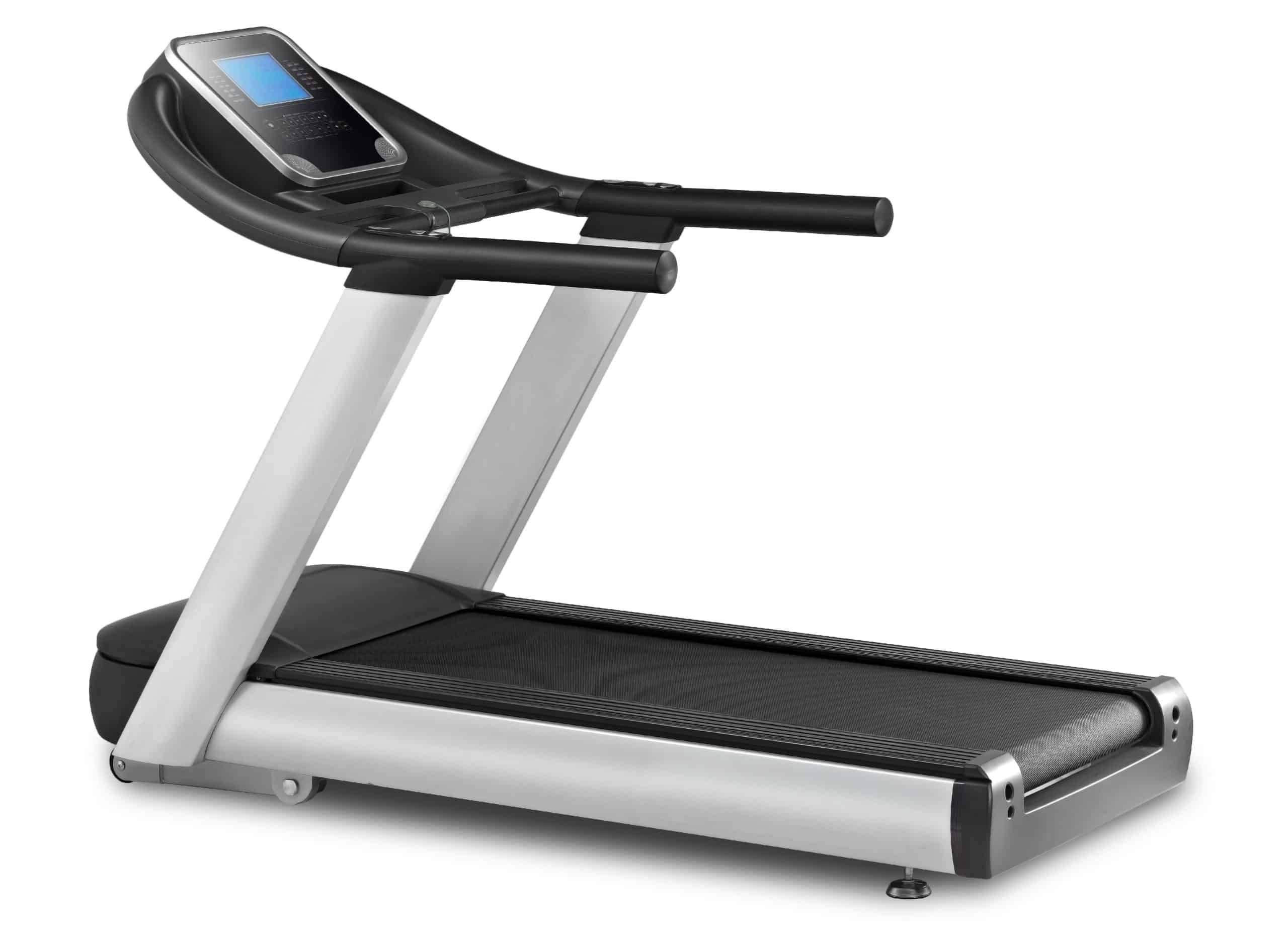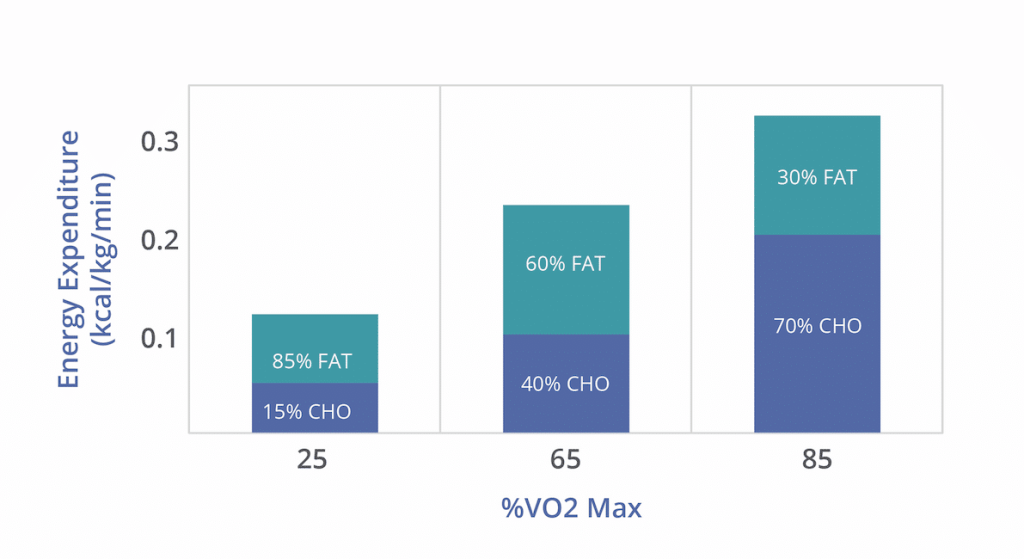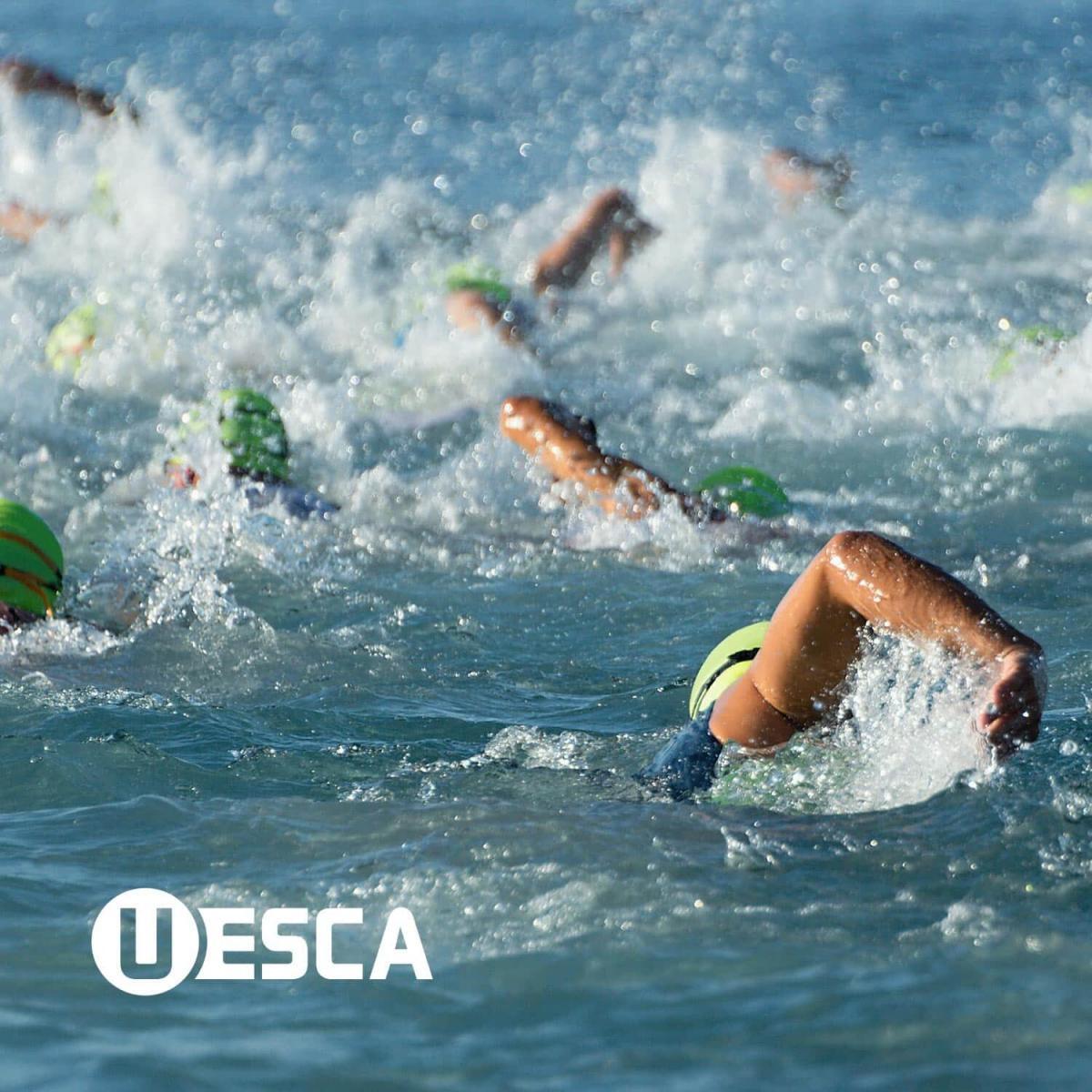A lot of endurance sport athletes train and race for reasons other than competition or a high placing. One of the biggest reasons is for the health benefits and moreover, to lose weight.

So when you have a client come to you with weight loss as a primary goal, how do you proceed from a cardiovascular programming standpoint? If you’ve ever used bike/treadmill/elliptical in a gym, you’ve likely noticed a graph on the console of the machine that denotes different intensity zones – one of them likely being the ‘fat burning’ zone. This zone is usually at the low end of the intensity spectrum.
As a former personal trainer, I’d get asked by clients with some frequency if these graphs were correct. The answer is yes and no. Here’s why…
From a percentage perspective, these graphs are usually correct – meaning, you burn the highest percentage of fat (in relation to carbohydrates) at a low heart rate. But here’s the rub.
In respect to the total amount of fat burned, the cardio machine graphs are not correct. You burn the highest amount of fat at a higher intensity (65% of one’s VO2 Max). As you can see in the chart below, you are most efficient (85% of energy comes from fat) at a low effort level – 25% of one’s VO2 Max. However, you burn the most absolute fat at 65% of your VO2 Max.

Note: CHO refers to carbohydrates
Therefore, from a programming aspect when looking specifically at what intensity level burns the most fat, look to exercise at a higher intensity than percentage-based intensity zone charts denote.
In regard to exercising at a higher intensity, exercising at one’s lactate threshold (LT) is typically an intensity that is relatively high, but sustainable. Great – but how can you know what your LT is without pricking your finger and having your blood analyzed?
Good question!
Research has shown a very strong correlation between one’s LT and their Ventilatory Threshold (VT). VT is pretty simple to figure out. After the body is warmed up, VT is representative of when one’s breathing starts to become a bit labored. As such, this benchmark is likely a good effort level to exercise at to burn fat and get a great workout!
Ancillary to this topic, unless your client wants to undergo a true VO2 max test, the easiest way to figure out one’s VO2 Max is to perform an estimated (sub-maximal) VO2 Max assessment.
Learn more about our certifications and to get $50 OFF the purchase price!
Download the UESCA Triathlon Course Overview/Syllabus
Download the UESCA Running Course Overview/Syllabus
Download the UESCA Ultrarunning Course Overview/Syllabus
Download the UESCA Cycling Course Overview/Syllabus
Download the UESCA Endurance Sports Nutrition Course Overview/Syllabus










